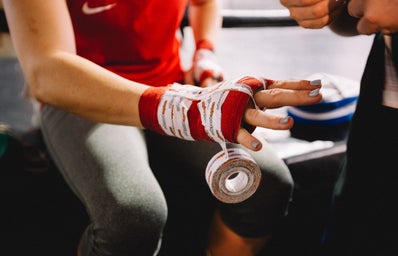We’ve all had moments where we experience injuries that can impact our daily lives. Even spraining a wrist or an ankle can make getting through the day really difficult. Here is a list of injuries that are rather inconvenient to have in college. Hopefully reading about these can increase awareness for injury prevention as well as treatment.
Concussions:
Mild traumatic brain injuries that are unfortunately very common. Concussions are not just sports injuries. Anything from falling down, getting hit in the head with an object in motion, and even hitting your head too hard against a headboard can result in a concussion. At the neurological level the axons of your neurons get stretched out and the neurons get damaged. This injury is super annoying because in order to recover you essentially can’t use your brain. That means no tv, no reading, and no doing assignments. Definitely an unfortunate injury to receive in a college setting.
Torn Labrums:
I experienced this particular injury this past winter while training for a half marathon. At the junction where the femoral head of your leg joins the acetabulum (hip socket) of your hip, there is an important rim of cartilage that cushions and secures your joint. This rim of cartilage is known as a labrum. Sometimes individuals are born with or develop extra bony growths off of either their acetabulum or femoral head that tear this labrum, a condition known as femoral acetabular impingement (FAI). If the tear is bad enough, the best move is probably surgery. I ended up receiving a labral tear from a bony growth off of my femoral head that was bad enough to warrant surgery. Imagine my surprise when I found out that at the age of 19, I needed a hip surgery. Well labral tears are actually pretty common among young women. So if you ever find yourself with this unfortunate injury, I hope you find a good show to binge watch while bed ridden and practice mastering crutches.
Broken Bones:
Most people have broken a bone or two in their lives. Accidents happen and fortunately bones are able to heal themselves in most cases with the help from added stability provided by casts, splints, and braces. Bones are actually quite impressive given they are stronger than steel and some of the strongest material found in nature. Broken bones usually take a while to heal, and if breaks are bad enough, they could require the assistance of hardware. The easiest bone to break in the body is the clavicle or collar bone (sometimes also referred to as the beauty bone). The most difficult bone to break in the body is the scapula or shoulder blade (typically only seen in events with severe trauma, such as car crashes). If you want to keep your bones healthy and avoid having to wear a cast and waiting for a break to heal, make sure to get enough calcium and not make dumb/dangerous decisions that could result in bone breaks.
Ligament Tears:
Ligaments are tough bands of connective tissue that connect bones or cartilage and keep your joints held together. The human body actually has hundreds of ligaments keeping us held together. While ligaments are quite tough, they can sometimes get overstretched and tear. This injury is particularly common in sports. Many individuals tear their anterior cruciate ligament (ACL) participating in sports that require running at quick paces and making abrupt stops and turns (such as soccer and football). These tears usually result in a great deal of inflammation and discomfort. Tears often require surgery to repair.
Muscle Strains:
Muscle strains are extremely common. They result from overstretching or tearing of muscles usually due to fatigue and improper usage. This could occur from lifting weights, cardio exercises, and even stretching. The best way to prevent these strains is to make sure your body is warmed up before participating in intense exercise. It is also important to stretch your muscles before and after activity, but not overstretch them. Should you find yourself with a muscle strain, the best courses of action for treatment include resting, icing to reduce inflammation, and taking an anti-inflammatory like Advil to reduce pain and swelling. Soaking in warm baths with Epsom salts can also help to relax tight muscles and prevent future strains.



